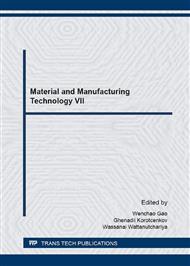p.206
p.211
p.216
p.223
p.230
p.235
p.242
p.248
p.253
Impedance Spectroscopic Inspection Toward Sensitivity Enhancement of Ag-Doped WO3 Nanofiber-Based Carbon Monoxide Gas Sensor
Abstract:
This work reports the impedance analysis and carbon monoxide gas sensing response of tungsten oxide (WO3) nanofibers with silver (Ag) nanoparticle doping. The Ag-doped WO3 nanofibers were prepared by an electrospinning technique. The impedance spectroscopic measurements of undoped and Ag-doped WO3 nanofibers were performed to study the contribution of electrical parameters involved in the electron transport. The impedance modeling obtained from the fitted Nyquist plot shows that the RC components attributed to Ag-WO3 interface are introduced to the system upon Ag addition. Carbon monoxide (CO) gas detection was carried out by resistance measurement using a DC method. The sensitivity of Ag-doped WO3 nanofibers is found to be greater than that of the undoped sample. The improved sensitivity is derived from the high interface resistance between Ag and WO3 grains. The contribution of Ag dopants is conceived to induce electronic structure alteration of the sensor material.
Info:
Periodical:
Pages:
230-234
Citation:
Online since:
September 2016
Price:
Сopyright:
© 2016 Trans Tech Publications Ltd. All Rights Reserved
Share:
Citation:


